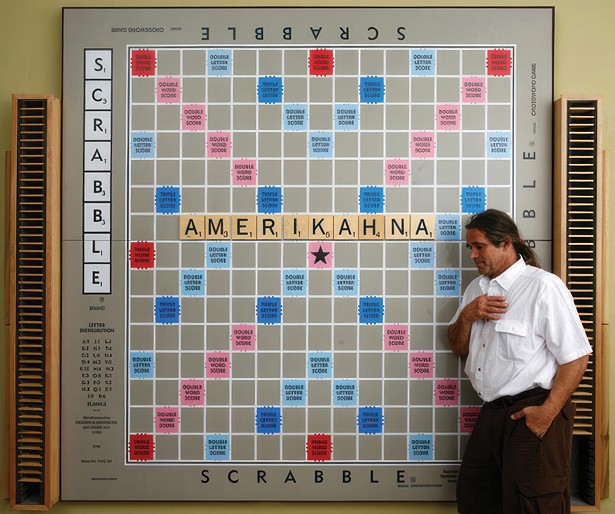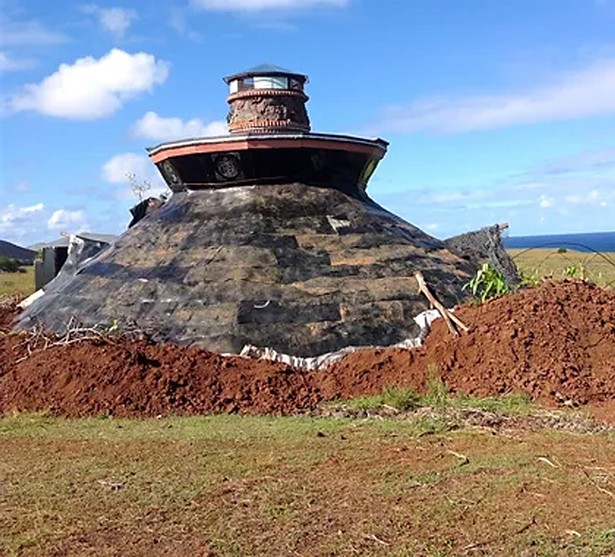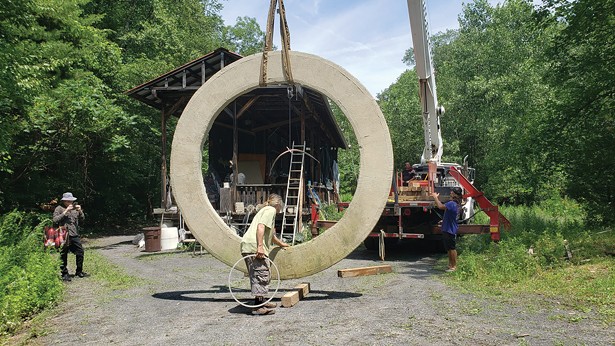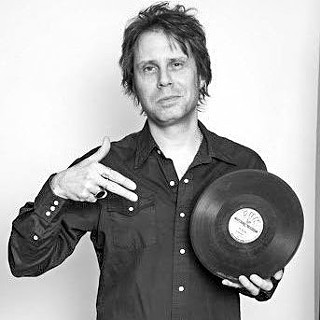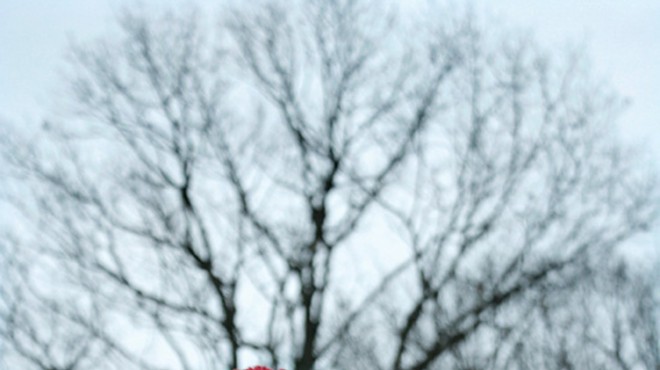“I am, as always, the vagabond artist, [and] therefore have little constraints with my time as opposed to your schedule (as I imagine),” emails John Kahn when setting up an interview, later expanding on that sense of freedom, and much else, when he and your arts editor meet up in person. “All I’ve ever done was art. I’ve never had a ‘real’ job. I’ve never done anything but exactly what I wanted to do.”
And what the sculptor, architectural and theatrical set designer, woodworker, visual artist, street performer, costume creator, inventor, and master builder has done in the last 45 years has been consistently astonishing—as is vividly shown in “IKAHN: Arc of an Artist,” a career-retrospective exhibition on view this month at the MARS Creative Factory in Saugerties, a former machine shop and Avon beauty products distribution center that has been reopened by his son Jasper as an alternative arts space. The sprawling indoor/outdoor exhibit features a wealth of eye-popping Kahn creations that includes mammoth works like his Tower Mobile, dinosaur spine-like Wing Bench, wall-sized Homage to Scrabble pop art game board, and the tellingly named World’s Largest Skateboard, which measures over 40 feet and rolls along on 30-inch wheels repurposed from racing cars.
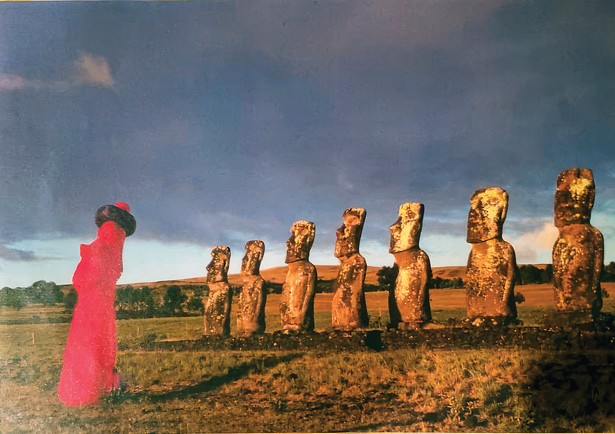
Inspired “mainly by nature and man’s accomplishments, both technologically and industrially,” Kahn’s works incorporate a wide range of materials, such as stone, steel, glass, ceramics, cast aluminum, and fabrics. His sculptures have been shown at a raft of prominent galleries as well as the Neuberger Museum of Art in Harrison, the Strong Museum of Play in Rochester, the Bruce Museum in Greenwich, Connecticut, and the Father Sebastian Englert Anthropological Museum in Chile; several of them are even part of the permanent art collections of companies like Texaco, PepsiCo, IBM, Disney, and General Foods. His most visible presence, however, has been via his long association with the late Muppets creator and puppeteer Jim Henson, with whom he collaborated on designing sets for the beloved 1980s children’s television show “Fraggle Rock.” The sense of childlike wonder and love for making things that defines and runs through all of Kahn’s work is something that came to him at the beginning and never left.
“My ‘skin’ as an artist is one I was born with,” says Kahn, who grew up on the South Shore of Long Island with six other artistic siblings. “The earliest testimony to this fact comes from my mom’s entry into my baby book when I was just under two years of age. Engaging and acclimating with this new phenomenon called life, she wrote, ‘This guy is a little builder, he enjoys organizing all of his blocks and then constructing fantastic little structures.’” Summers spent accompanying his novice-archaeologist father on digs sparked his deep interest in Indigenous cultures and paleontology while supervised visits to area junkyards and outdoor markets were likewise pivotal.
“At age eight my mom entered me into my first crafts fair in school, where I was selling painted rocks and little figurines made of plaster,” says Kahn, who by 10 was shooting and developing photos and making pottery using his dad’s homemade kiln and kickwheel, the latter fashioned from Volkswagen parts. “Eventually, Mom would take me to a couple of town craft fairs that went on all weekend long. She would manage our booth, and I would scour the fair looking at all kinds of techniques and materials, eyes wide open and always exploring what was unfamiliar. I was a hunter-gatherer of both natural and industrial waste—any objects that went into the category of ‘Fascinating Item That I Certainly Could Never Recreate’ lay in wait to be incorporated into a project.”
His mother also took her kids to the circus, another powerful early influence. “She loved the circus, and every year, somehow, she saved enough money for at least five of her seven children to attend the Ringling Brothers show,” says Kahn. “So memorable were these special visits that they became a huge facet of my persona. I would have backyard circus shows, all the while accumulating the skills of sets, props, design, choreography, and performance.” Before long, the pint-sized performer had perfected his ability to ride a unicycle handed down from his drafted big brother, a skill he credits with helping him later master the tight wire, stilt walking, juggling, and fire twirling. He cocreated a recurring “Art Day” event for his junior high school, sang in and made costumes for a couple of high school rock bands, and got a summer job at Great Adventure amusement park in New Jersey, where he appeared as the fire-eating Dusty the clown.
Kahn majored in visual art at SUNY Purchase, studying under the integral Surrealist art dealer and gallerist Julian Levy. Utilizing the college’s wood shop and other facilities, he began creating the Alexander Calder-inspired mobiles and early examples of the type of oversized, whimsical works that would come to define his sculpting: a seven-foot wooden eggbeater, a four-foot can opener, a seven-foot zipper, and an 11-foot “flying machine” based on one of Leonardo DaVinci’s designs.
In the 1970s he ran with the New Vaudevillians, a movement of loosely affiliated vaudeville/carnival-inspired performers that included clown and actor Bill Irwin, juggling/comedy troupe the Flying Karamazov Brothers, and juggler Michael Moschen. “John’s always had this intense ability to go after something unknown, to go into the unknown and come back,” says Moschen, who met Kahn in 1974 and further schooled him in juggling. “His artwork is potent and powerful, but not just intellectually. It’s very visceral, very primal. Some of his shapes are almost prehistoric.” While doing a two-month circus gig, and living in a camper van he built himself, at an amusement park in California, Kahn found himself fixated on the mechanics of the site’s roller coaster. The fascination led to a series of giant gears and chains that he sculpted from wood; “IKAHN” includes Chain Gang, a piece that features individual chain segments made of stone, wood, bronze, and glass.
Another crucial figure that Kahn met in the ’70s was Henson. “In 1976, the Neuberger Museum had a show of 35 of my pieces, and Jim purchased one,” Kahn remembers. “I sort of knew who he was because I knew who Kermit the Frog was, but I’d never seen ‘Sesame Street’ because I didn’t watch TV. We got to be friends, and I had a studio in Port Chester where he’d come to hang out. He was trying to lure me into that TV world, but I could see how with Kermit he’d created this rag doll that led to this institution that he was trapped in. And I wanted to keep my independence.” In time the two worked out a partnership that resulted in the hit “Fraggle Rock” while allowing autonomy for Kahn, who, besides designing the sets, was one of the costumed characters who performed in the Macy’s Thanksgiving Day Parade and at malls around the country.
In the late 1980s Kahn moved to Saugerties, where he and Henson developed the Schoolhouse studio in a historic 19th-century brick house in which he also lived. With his ex-wife, trapeze artist Niki Swarthout, in 1984 he launched the Runaway Circus, which taught local kids circus skills and helped them create unique performances and appeared in the Eco-Village at the Woodstock ’94 festival. After deciding he should live somewhere that was a refuge from the constant work and coming-and-going visitors at the Schoolhouse, he purchased a land parcel outside the village and spent the ensuing 20 years designing and building—mainly by himself—the Tower House. The five-level, Tolkein-esque home was crafted using locally sourced bluestone and wood, copper, aluminum, repurposed historical components, and other materials. “Some people have described the house as octagonal, but it’s not, it’s round,” the builder says, adding that while he’s not a trained architect he is an accredited draftsman. “When I was studying woodworking in college, I also learned wood bending; all of the walls in the Tower House are completely curved.” Set on a thickly wooded property with a pond, the 3,518-square-foot house has three bedrooms, four baths, and a sauna.
As idyllic and isolated as life at the Tower House was, however, in 1996 Kahn would relocate to somewhere that is, both of those things in the extreme: Easter Island. “I’m super-reclusive and I’ve lived three quarters of my life in isolation in the studio anyway—I’ve been hiding out my entire life,” says a laughing Kahn, who reinforced his resourcefulness by learning survivalism from expert tracker Tom Brown, Jr., at his Pine Barrens school. “So now I’m really all alone and I’m thrilled!” (Well, not all alone: The artist met his present wife, Anita, a native Rapa Nui descendent, on the isle.) Although he’s been camping for most of his 25 years on Easter Island, for the last few he’s been constructing his next domicile: Earth House, a 22-foot structure that faces the island's sacred Rano Raruku and Poike craters.
And now, as he prepares to return permanently to Easter Island, he’s preparing to leave it all behind—“it” being the collection of his outsized and bemusing sculptures that he, Jasper, and their truck-driving crew have been transporting to the MARS space for the September show.
“It’s been an emotional time for me, all of this looking back while I put the show together,” says Kahn. “The whole idea feels dangerous to me, it makes me feel stagnant and claustrophobic, because I’m ever kinetic. I’ve never looked back. Ever.”
“IKAHN: Arc of an Arist” will open on September 2 at the MARS Creative Factory in Saugerties, where it will be on view through September 30.







